cis-1,2-Diaminocyclohexane
Synonym(s):cis-1,2-Cyclohexanediamine
- CAS NO.:1436-59-5
- Empirical Formula: C6H14N2
- Molecular Weight: 114.19
- MDL number: MFCD00063746
- EINECS: 205-754-6
- SAFETY DATA SHEET (SDS)
- Update Date: 2025-09-25 17:15:13
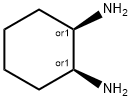
What is cis-1,2-Diaminocyclohexane?
Chemical properties
Clear colorless liquid
The Uses of cis-1,2-Diaminocyclohexane
cis-1,2-Diaminocyclohexane was used in the synthesis of platinum complexes that have high antitumor activity.It was also used in the synthesis of multidentate ligands for uranyl and transition metal complexation.
What are the applications of Application
cis-1,2-Diaminocyclohexane is a key compound for the synthesis of multidentate ligands
General Description
cis-1,2-Diaminocyclohexane perturbed the spectrum of free pyrroloquinoline quinone (PQQ), a covalently linked form of which is the carbonyl cofactor of lysyl oxidase and also induced similar changes in the spectrum of lysyl oxidase.
Purification Methods
Dry the diamine over solid KOH and distil it in a vacuum. It is a strong base, keep away from CO2, store in the dark under N2. [Beilstein 13 IV 1.]
Properties of cis-1,2-Diaminocyclohexane
| Melting point: | 8°C |
| Boiling point: | 92-93 °C/18 mmHg (lit.) |
| Density | 0.952 g/mL at 25 °C (lit.) |
| vapor pressure | 0.4 mm Hg ( 20 °C) |
| refractive index | n |
| Flash point: | 161 °F |
| storage temp. | Keep in dark place,Inert atmosphere,Room temperature |
| Water Solubility | Completely miscible in water |
| form | Low Melting Solid |
| pka | 9.93(at 20℃) |
| color | Brown |
| CAS DataBase Reference | 1436-59-5(CAS DataBase Reference) |
| NIST Chemistry Reference | cis-1,2-Cyclohexanediamine(1436-59-5) |
Safety information for cis-1,2-Diaminocyclohexane
| Signal word | Danger |
| Pictogram(s) |
 Corrosion Corrosives GHS05 |
| GHS Hazard Statements |
H314:Skin corrosion/irritation |
| Precautionary Statement Codes |
P280:Wear protective gloves/protective clothing/eye protection/face protection. P363:Wash contaminated clothing before reuse. P303+P361+P353:IF ON SKIN (or hair): Remove/Take off Immediately all contaminated clothing. Rinse SKIN with water/shower. P305+P351+P338:IF IN EYES: Rinse cautiously with water for several minutes. Remove contact lenses, if present and easy to do. Continuerinsing. P405:Store locked up. |
Computed Descriptors for cis-1,2-Diaminocyclohexane
| InChIKey | SSJXIUAHEKJCMH-OLQVQODUSA-N |
New Products
4,4-Difluoropiperidine hydrochloride tert-butyl 9-methoxy-3-azaspiro[5.5]undecane-3-carboxylate Indole Methyl Resin N-Isopropylurea N,N-Dicyclohexylcarbodiimide(DCC) MELDRUMS ACID 5-METHYLISOXAZOLE-4-CARBOXYLIC ACID Magnessium Bis glycinate Zinc ascorbate 1-bromo-2-butyne 2-acetamidophenol 9(10H)-anthracenone Erythrosin B, 4-Piperidinopiperidine 2-((4-morpholinophenylamino) (methylthio) methylene) malononitrile 2,4-dihydroxybenzaldehyde 3-(4-morpholinophenylamino)-5-amino-1H-pyrazole-4-carbonitrile Methyl 2-methylquinoline-6-carboxylate 2,6-dichloro-4-nitropyridine 4-Bromo-2-chlorobenzonitrile 2-(benzylamino)acetic acid hydrochloride 4-(tert-Butoxycarbonylamino)but- 2-ynoic acid 3,4-dihydro-2H-benzo[b][1,4]dioxepine 1-Phenyl-1-cycloprppanecarboxylicacidRelated products of tetrahydrofuran


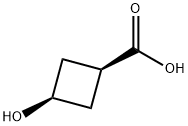


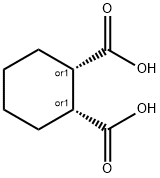
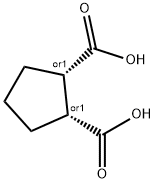
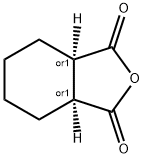
You may like
-
 cis-1,2-Cyclohexanediamine CAS 1436-59-5View Details
cis-1,2-Cyclohexanediamine CAS 1436-59-5View Details
1436-59-5 -
 3-(4-amino-1-oxoisoindolin-2-yl)-1-methylpiperidine-2,6-dione 98%View Details
3-(4-amino-1-oxoisoindolin-2-yl)-1-methylpiperidine-2,6-dione 98%View Details -
 614-19-7 98%View Details
614-19-7 98%View Details
614-19-7 -
 3112-85-4 Methyl phenyl sulfone 98%View Details
3112-85-4 Methyl phenyl sulfone 98%View Details
3112-85-4 -
 20677-73-0 (2,2-diethoxyethyl)methylamine 98%View Details
20677-73-0 (2,2-diethoxyethyl)methylamine 98%View Details
20677-73-0 -
 3-(4-(hydroxyamino)-1-oxoisoindolin-2-yl)piperidine-2,6-dione 98%View Details
3-(4-(hydroxyamino)-1-oxoisoindolin-2-yl)piperidine-2,6-dione 98%View Details -
 57381-49-4 2-bromo-4-chlorobenzonitrile 98%View Details
57381-49-4 2-bromo-4-chlorobenzonitrile 98%View Details
57381-49-4 -
 4,6-dichloropyrimidine-5-carbaldehyde 98%View Details
4,6-dichloropyrimidine-5-carbaldehyde 98%View Details
5305-40-8
Statement: All products displayed on this website are only used for non medical purposes such as industrial applications or scientific research, and cannot be used for clinical diagnosis or treatment of humans or animals. They are not medicinal or edible.
